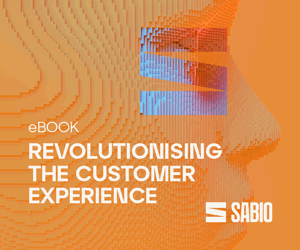Quick Overview
Making sure you can answer and resolve customer queries quickly and efficiently has a huge impact on the customer experience, and there are several things you can do, including:
- Acting on the Voice of the Customer
- Introducing Desktop Analytics
- Providing Self-Service Options
In this article, our panel of experts provide their best practices to help streamline incoming customer queries.
How to Streamline Incoming Customer Queries
Customers can reach out to businesses for a variety of reasons, and these can quickly build up and cause queues, frustration, and confusion. But how can contact centres streamline incoming customer queries to make the process as easy as possible for both customers and employees?
Not sure? Here are 14 ways to streamline incoming customer queries:
1. Act on the Voice of the Customer
The art of streamlining incoming customer queries starts with truly understanding the voice of the customer at every stage of the customer journey.
Good agent training with a focus on careful listening and acting on customer feedback – good and bad – is the necessary first step. Next, blend training with modern-day analytics to capture every single customer interaction, uncover harmful bottlenecks and suggest proactive solutions.
Let analytics identify the one word or phrase that crops up in every conversation to help supervisors adjust their agent training techniques and enable planners to assign the best-skilled agents to the right customers.
Valuable intelligence from analytics also allows organizations to adjust marketing campaigns and even flag up a product defect.
Meanwhile, when analytics highlights that 90% of customers are asking the same question, contact centres can make the most of chatbots or website FAQs to handle simple enquiries and streamline the overall number of customer queries coming directly to frontline teams.
2. Introduce Desktop Analytics

The first step is to understand what is involved in dealing with different enquiries in different channels.
Putting everything agents need in one place is the ideal but can be difficult. Most frontline staff depend on a diverse set of tools and processes to get the job done.
They might have a tool to clock in and clock out, one to manage their schedules, an online portal for refunds and another one for shipping. Integrating all these into one single agent desktop helps boost agent productivity and the customer experience.
Next, adopt desktop analytics that allows supervisors to capture keystrokes and screen activity from individual agents. This lets them know exactly what is happening so they can offer the right support and training for agents to streamline incoming customer queries.
Emergency breakdown service AAA Northeast did just that, using analytics to highlight training needs, improve processes and decrease AHTs for highway calls by a whopping 53 seconds.
Contributed by: Tripti Tapuriah-Modi at Calabrio
3. Provide Self-Service Options
Empower customers to find answers to common queries independently by offering self-service options like user-friendly FAQs, knowledge bases, and chatbots.
By reducing the volume of incoming calls, your agents can focus their expertise on handling more complex queries.
Contributed by: MaxContact
4. Upgrade Your Self-Service With Intelligent Virtual Agents

Consumer preferences for interacting with businesses for customer service are continually evolving. Identifying and recognizing these preferences is critical to compete in our increasingly digital world.
In order for your business to stay competitive, it’s now imperative to provide quick answers to common questions with 24/7 omnichannel customer service.
With the power of intelligent virtual agents, you can automate these common questions and empower customers to self-serve across both voice and digital channels.
This allows consumers to interact with your brand, however and whenever they want. This also allows human agents to focus on complex interactions which require a human agent and empathy. Overall, this creates an ideal process for both agents, customers and your business.
Contributed by: James Mackie at Five9
5. Utilize Intelligent Call Routing
Make the most of intelligent call routing technologies that analyse customer data, such as previous interactions or customer preferences.
This enables the system to direct incoming calls to the most suitable agent or department, ensuring customers are connected to someone with the right skills to address their specific query.
Contributed by: MaxContact
6. Use AI-Powered Analytics to Drive AI Routing

AI can power the streamlining of incoming customer queries in a variety of different ways. AI-powered analytics can be used to drive AI routing.
Rich analysis showing customers’ recent experiences with a business along with using all available data such as sentiment can be used to automatically connect customers with the best available agent for their needs.
This drives hyper-personalized interactions tailored to each customer and makes sure that incoming customer queries go to the right agent.
AI can also drive real-time sentiment analysis during interactions, coaching agents on what to say to lead to a quicker, positive resolution and thus lessening the burden of growing call volumes.
It is also more important than ever for agents to be multiskilled. A recent survey found that 46% of contact centre leaders reported an increase in customer support channels over the past two years.
In this new digital era, agents should not only be skilled in voice interactions but also in digital interactions, especially as more customers expect their requests to be handled digitally.
Depending on the complexity of the customer’s query, less complex requests can be handled by intelligent bots or IVR, with more complex requests being handled by a human agent.
Contributed by: Lauren Maschio at NICE
7. Get By With a Little Help From AI

When you’re supporting a highly technical and customizable product, streamlining customer queries is no small task – especially at scale.
Some customers may need a simple nudge towards the right documentation, whereas others require significant troubleshooting, contextual knowledge, and elaboration.
Allowing customers to self-identify their area of concern, based on product functionality, can help direct them to the right support tier.
For example, a SaaS web application could enable customers to contact support from within the product, providing relevant context for support staff. Large language models can further enhance this process, to better contextualize and predict a customer’s area of concern.
Whether you choose to invest in training a multiskilled support team up front or start all agents as generalists, a navigable, comprehensive, updated knowledge base empowers agents to address a range of queries.
Leveraging AI to answer and document common questions streamlines this process, easing workload and enhancing customer satisfaction.
Contributed by: Jeremy Eckman at Assembled
8. Apply Natural Language Processing (NLP)
Rigid DTMF-based IVRs can no longer keep up with elevated customer service expectations. Operational efficiency requires fluid journeys, driven by the wealth of available unstructured data, such as customer speech.
Natural language processing analyses a customer query, presented in their own words, enabling routing to the best agent or experience for resolution.
Operational efficiency requires fluid journeys, driven by the wealth of available unstructured data, such as customer speech.
With the proper care during deployment, not only is routing itself more efficient, directing people to alternative channels where appropriate, agents are also primed for conversations with the intent and details they need to keep satisfied customers flowing through the contact centre.
Contributed by: Jake Gardiner at Odigo
9. Ensure Multichannel Support
Today’s customers expect seamless interactions across multiple channels, so implement a unified contact centre platform that integrates all these communication channels.
This allows customers to switch between channels effortlessly providing a holistic view of customer interactions, enabling them to provide efficient and accurate query resolution.
10. Focus on First Contact Resolution
Place a strong emphasis on resolving customer queries during the initial interaction. Equip agents with robust knowledge bases, internal collaboration tools, and real-time customer information.
By striving for first contact resolution, you enhance customer satisfaction and reduce the need for customers to follow up on unresolved issues, ultimately decreasing overall contact volumes.
Contributed by: MaxContact
11. Eliminate Tactical Solutions

When solutions are introduced to deal with specific channels in isolation from the rest of the customer experience it may offer digital deflection or a popular alternative channel but it won’t streamline processes and can introduce significant pain points.
Unified omnichannel management allows for advanced routing rules, improved resource utilization and complete history visibility.
This improves the quality of the routing decisions to keep interactions flowing, whilst keeping the administrative burden to a minimum.
12. Managing Agent Skills and Profiles
There are core skills and specialized skills which vary between businesses and industries. Of course, agents should be encouraged to develop in areas which are of interest, but attention also needs to be paid to tracking incoming query types.
This can inform training plans by developing high-demand skills or refreshing training for query types where satisfaction is low.
Agent skill profiles are only of benefit to contact centres, agents and efficiency when they proportionally reflect real customer needs.
It’s not having skill-based routing that improves flow but having the right skills in the first place so the strategy can do what it’s supposed to and optimize agent utilization and customer satisfaction.
Contributed by: Jake Gardiner at Odigo
13. Take a Fresh Approach to Multiskilling
Customers expect fast, efficient service with a human touch, meaning the best agents are highly versatile and exhibit many different skills.
Rather than plan agent schedules around voice, fitting everything else around it, aim to forecast for all types of channels as accurately as possible.
They are true renaissance men and women, blending traditional skills like speed and product knowledge with softer skills that leave customers with an exceptional experience.
Today, being able to precisely define – and forecast – these multiple available agent skillsets is critical to streamlining incoming customer queries.
Thanks to recent advancements in workforce automation, innovative multiskill scheduling functionality makes it easy to match agents with the right skills to the right customers as demand fluctuates throughout the day.
Be flexible when it comes to channels and agent skills. Rather than plan agent schedules around voice, fitting everything else around it, aim to forecast for all types of channels as accurately as possible.
Just remember to update your WFM strategy as you add new agents and technology to further streamline incoming customer queries.
Contributed by: Tripti Tapuriah-Modi at Calabrio
14. Reinforce Training

It is critical to fight the “forgetting curve”, especially when agents are upskilling, cross-skilling, and keeping up with regulatory requirements.
By reinforcing training with microlearning, agents are more likely to retain their knowledge, enabling them to resolve enquiries more efficiently and quickly jump onto the next call.
Contributed by: Andrea Meyer at Centrical
For more great insights and advice from our panel of experts, read these articles next:
- How to Improve Contact Centre Response Time
- Contact Centre Performance Challenges and How to Fix Them
- The Top Scheduling Challenges and How to Fix Them
- Ways to Make Working in a Contact Centre Fun
Author: Robyn Coppell
Reviewed by: Megan Jones
Published On: 26th Jul 2023 - Last modified: 6th Sep 2024
Read more about - Technology, Analytics, Andrea Meyer, Artificial Intelligence, Assembled, Calabrio, Centrical, Editor's Picks, Five9, Lauren Maschio, MaxContact, NICE, Odigo, Training, Voice of the Customer








































